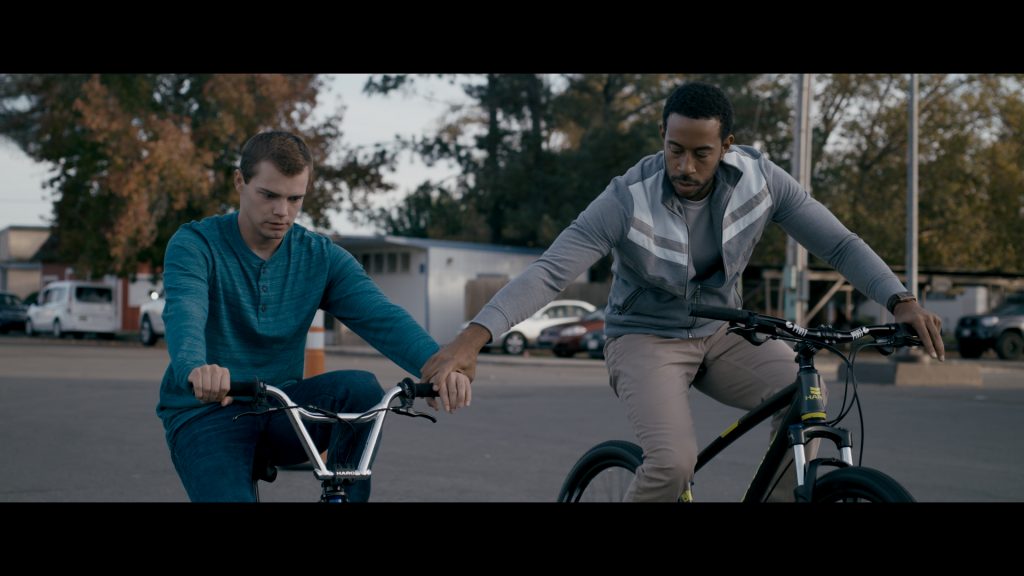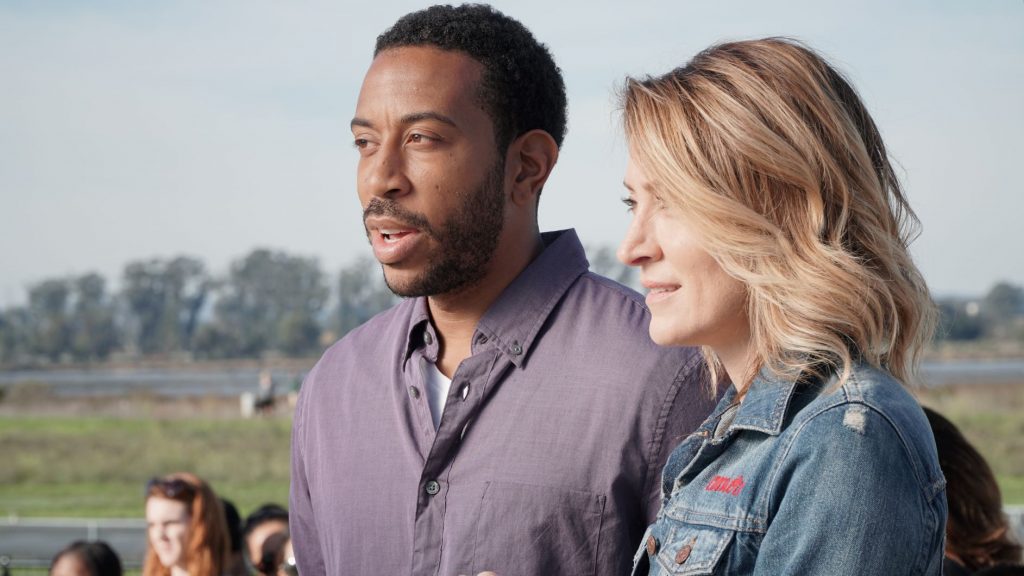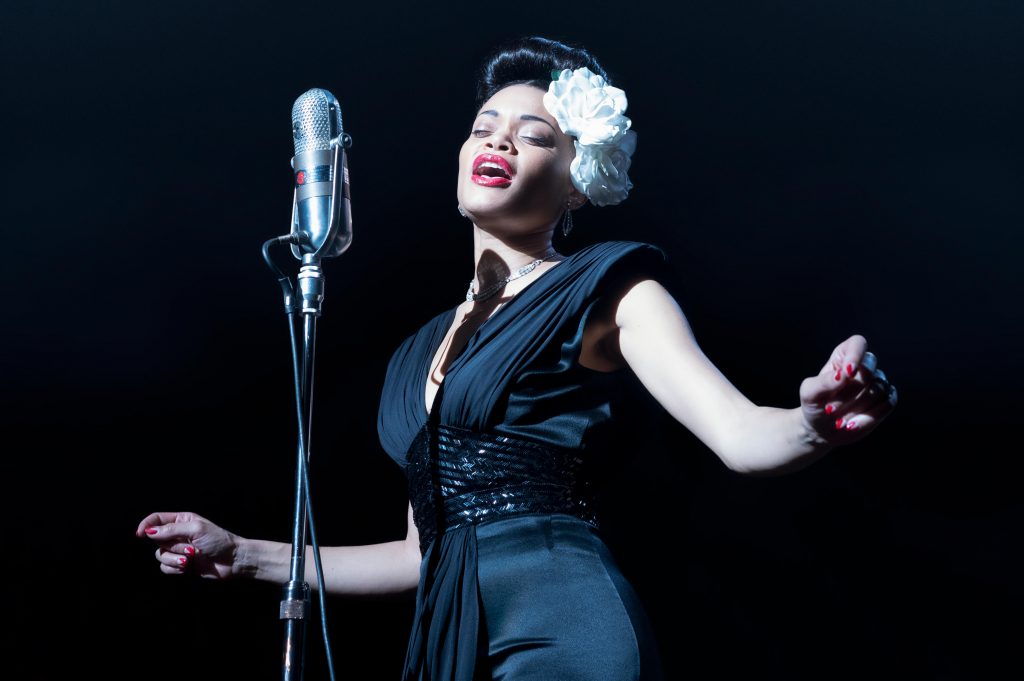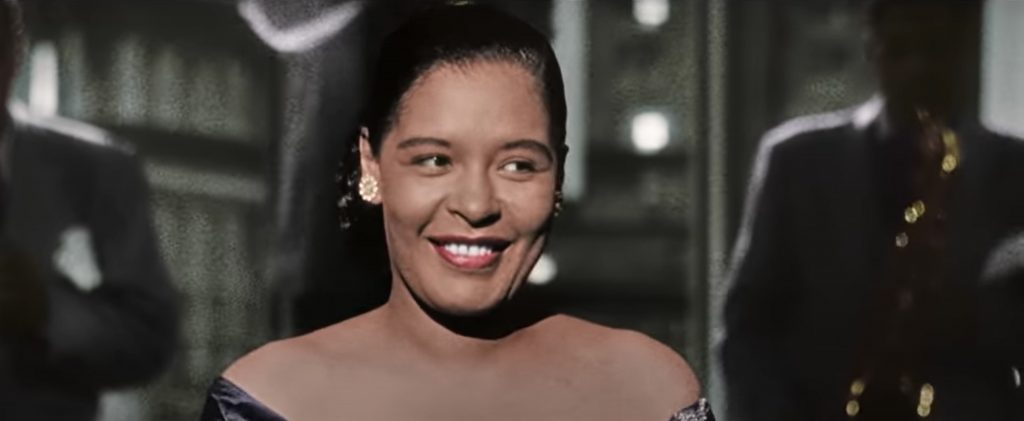February 28, 2021
by Carla Hay

“Ski Bum: The Warren Miller Story”
Directed by Patrick Creadon
Culture Representation: The documentary “Ski Bum: The Warren Miller Story” features an all-white group of people from the middle-class and upper-middle-class discussing the life of skiing filmmaker Warren Miller, including Miller himself.
Culture Clash: Miller came from a dysfunctional family and working-class background to become the pre-eminent filmmaker in the ski industry, and he endured many personal setbacks along the way.
Culture Audience: “Ski Bum: The Warren Miller Story” will appeal primarily to people interested in the ski industry, filmmaking or stories about people who pursue their dreams.
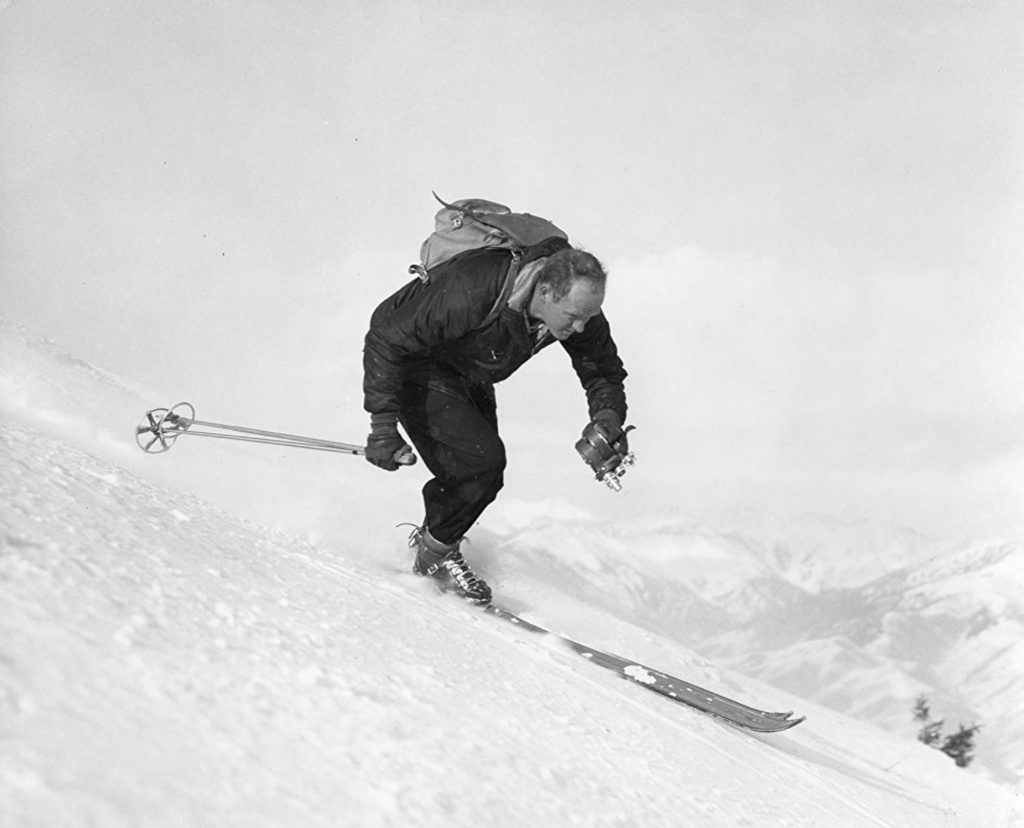
You don’t have to be a skiing enthusiast to enjoy the documentary “Ski Bum: The Warren Miller Story,” which chronicles the life of pioneering skiing filmmaker Warren Miller. It’s an insightful look into his life that’s compelling for anyone who’s interested in learning more about someone who took a lifelong passion, changed an entire industry, and inspired countless numbers of people. Although the documentary at times has a laudatory tone to it, the movie doesn’t gloss over Miller’s flaws or the low points in his life. “Ski Bum” features the last on-camera interviews that Miller did before he passed away in 2018, at the age of 93.
Directed by Patrick Creadon, “Ski Bum: The Warren Miller Story” also features interviews with Miller’s family members, business associates and friends to give further insight into his personality and how his work changed the ski industry. And there are expected archival clips, as well as clips from many of his ski documentaries that helped bring the popularity of skiing to new levels.
It’s no secret that skiing is an elitist sport that tends to cater to people who can afford to take skiing lessons and can go to ski resorts on a regular basis. Many of the people interviewed in the documentary comment that Miller, who came from a working-class background in Los Angeles, was able to break into these exclusive skiing societies because of his passion for skiing, which led to him becoming a prominent filmmaker whose specialty was making skiing documentaries with his company Warren Miller Entertainment.
Footage of elaborate ski stunts and tricks are easily available these days on the Internet, but when Miller started filming skiers in the early 1950s, this type of footage was rare. In the documentary, he talks about how his dysfunctional childhood affected his outlook on life. Miller’s father was an alcoholic whose career as a radio personality was derailed by the Great Depression, so the family was often financially unstable.
Miller says he liked to escape from his home on the weekends to do Boy Scout activities or play sports. Miller describes it as leading two different lives: the one he had on the weekends and the one he had during the week when he spent more time at home. He also says he felt like an outsider in his own home because his parents paid more attention to his sisters than they paid attention to him.
After he graduated from high school, Miller enlisted in the U.S. Navy. He says of his time in the military: “I really resented that loss of freedom, so I really made up for it when I got out.” As a young man, he developed a love for skiing. In the documentary, Miller comments on how skiing changed his life: “It really opens up all the gates of freedom.”
He became a “ski bum” by living a camping lifestyle outdoors in ski areas (where he would hunt rabbits for food) or by living in a trailer behind a ski resort. At these upscale resorts, he would make money by giving ski lessons. And it was during this time, he decided that he wanted to be a filmmaker of skiers at these resorts, especially skiers with a penchant for extreme stunts, whether they were professionals or amateurs.
Miller explains his entry into filmmaking this way: “I got hooked on shooting a movie … Getting that good is not a simple task.” Therefore, he honed his filmmaking skills by taking still photos of skiers. Timing is everything. Miller began doing ski documentaries at a time when there weren’t very many other people doing it. He also started to hit his stride as a ski filmmaker around the same time that the ski industry began booming in the late 1960s.
But it wasn’t all smooth sailing. At the beginning of his career, his first wife Jean (whom he married in 1951, and he says it was “love at first sight” when he met her) died of spine cancer about 18 months after their son Scott was born. In his documentary interview, Miller gets emotional when talking about this tragic loss.
He explains that he coped by focusing more on his work: “I could pour all of my emotional angst in the film. You can’t worry if your mind is busy.” In addition to directing, editing and producing his movies, he narrated his films. Miller’s often-sarcastic but folksy style of narrating made his ski documentaries stand out from the pack. One of his well-known catch-phrases that he used with footage of someone (usually a ski instructor) throwing a ski in frustration was: “You want your ski? Go get it!”
Miller also literally went the extra mile in a way that most ski documentarians did not: He traveled around the country with his movies and gave live commentaries and introductions while his films played to movie audiences. It’s a form of interactive entertainment that most movie theaters do not have anymore, since movie cinemas and audiences now expect people to be silent while watching movies in theaters. Miller says of his ski-filming activities: “I always had more fun than anyone else.”
About a year after his first wife Jean died, Miller met his second wife Dorothy, nicknamed Dottie, who was also an ardent ski enthusiast. They married in 1955 and had two children together: daughter Chris (born in 1957) and son Kurt (born in 1959). When the kids were young, they would travel around the country with their parents for the film tours to show his movies and for Warren to get new footage of skiers.
Chris remembers of her early life: “I had an amazing, amazing childhood.” Warren would sometimes put his kids in his movies. But, by his own admission, he was a workaholic. And as his business became more successful, he spent less time away from home. By the 1970s, when his children reached their teenage years, and when they couldn’t travel with him as much because they had to be in school, he stopped putting them in his movies.
His daughter Chris sobs when she thinks about how her father’s absence made her feel bad when he couldn’t be there for her birthdays (he wasn’t there for her birth either) or other important milestones. She remembers how she envied kids in school who had a father who would be present for school activities. And she says she wished back then that he could be more like a “normal” father, but later in life as an adult she became at peace with how her father’s workaholic ways affected her childhood.
Warren admits that during his long and frequent absences from home, he “lived like a bachelor,” and his wife Dottie got lonely and ended up having an affair. The affair led to Warren and Dottie’s separation and eventual divorce after 20 years of marriage. In 1988, he married his third wife Laurie (who owned a ski shop at the time), and they eventually settled in the Seattle area, on Orcas Island. They remained married until his death. Laurie gives brief commentary in the documentary about how important it was for Warren to scale back on his workload as he transitioned into semi-retirement. However, he never stopped working.
In addition to dealing with problems in his personal life, Warren also had some major blows in his professional life. Early in his career, he let his mother and sister handle his business affairs. But according to Warren and his biographer Andy Bigford (a former editor of Ski magazine), the women embezzled about $160,000 from Warren. At the time, the money was almost his entire savings. Warren declined to have them arrested, but he says in the documentary that he never saw or spoke to his mother and sister again after this betrayal.
Losing his life savings meant that Warren had to financially start over from scratch, and he had to sell a lot of his equipment and possessions to pay his debts. After the success of filmmaker Bruce Brown’s 1965 surfing documentary “The Endless Summer,” Warren decided he wanted to make this type of influential documentary for skiing. He took a big financial loss when he made a movie (whose name is not mentioned in “Ski Bum”) that was a major flop at the box office. (It didn’t help that the movie was released during a hot July summer.)
And then another financial blow came with 1969’s “The Killy Style,” his first major documentary TV series, starring French ski champion Jean-Claude Killy. Warren financed the entire series himself and went over-budget. And when it came time to be paid by the TV network, the network refused and dared Warren to sue. Warren’s biographer Bigford says of “The Killy Style” series: “He lost about $160,000 on it.”
In the documentary, Warren comments on why he persevered when many other people would have given up under the same circumstances: “That old axiom ‘The show must go on.’ If you don’t have that attitude, then you don’t deserve to be in show business.”
In 1989, Warren sold Warren Miller Entertainment to his son Kurt and Kurt’s business partner Peter Speek. Kurt had been working for the company for about 12 years before buying it. And after the sale, Warren was the one who was working for Kurt. Warren was eventually phased out of the company’s day-to-day business.
Kurt comments on this transition, which he admits was difficult for the family and other people: “I had a specific formula that was 180 degrees [different] from what my father did.” As pointed out in the documentary, Warren’s style of running the company put an emphasis on storytelling. Kurt’s style of running the company put an emphasis on sales. Kurt says that when he took over the company in 1989, the annual stats were that 67,000 people attended the company’s movie screenings at $8 to $12 a ticket. By 2001, that annual number grew to 300,000 attendees at $22 a ticket.
Kurt eventually eliminated Warren’s narration in the company’s films and replaced it with narration from the skiing stars of the films. Also gone from the company’s movies were Warren’s jokes, which Kurt thought were too corny. And the company also reduced the number of personal appearances that Warren made for the movies.
Several of the people interviewed in the documentary say that they preferred the company when Warren was in charge. Professional extreme skier Dan Egan comments, “Warren loves people. He loves being in front of people. He loves inspiring people. I think being phased out is something that he didn’t figure.”
Danny Wimmer, a live events promoter who does a lot of work in extreme sports, tears up and gets emotional about Warren’s eventual ouster from Warren Miller Entertainment: “It was a sad thing. Inevitable, I guess. But he was the force behind that [company].” Warren Miller Entertainment was later sold to Time Inc., which sold it to Bonnier Corporation, which was then absorbed by Active Interest Media in 2013.
Warren’s wife Laurie and his daughter Chris say that Warren was heartbroken over no longer having day-to-day responsibilities at Warren Miller Entertainment, but his gradual exit from the company gave him the freedom to pursue other interests. He never stopped doing ski films, but he also helped build the Scott Stamnes Memorial Skatepark on Orcas Island with Mark “Monk” Hubbard as the architect. (Hubbard, who is interviewed in the movie, died in 2018, at the age of 47.) True to his humble nature, Warren didn’t want his name displayed anywhere in the park, even though he helped finance the park’s construction.
Several people in the documentary say that one of the reasons why Warren was so beloved was that even though skiing can be an elitist sport, Warren never had an elitist attitude toward people who wanted to learn how to ski. He also had a fondness for skiers with physical disabilities, whom he put in almost all of his films. One of his favorites was Tracy Taylor, who was born with sacral agenesis (a spine condition). Taylor appeared in his 1985 movie “Steep and Deep,” when she was 11 years old. Clips from “Steep and Deep” are included in the “Ski Bum” documentary.”
Other clips from Miller’s films that are in the documentary include 1983’s “Ski Time” and 1986’s “Beyond the Edge.” Skier/filmmaker Greg Stump, who made his first and last appearance in a Warren Miller movie in “Ski Time,” freely admits that he only wanted to be in the movie to use it as a launching pad for his filmmaking career. Stump says it’s the same thing that Warren did when Warren first started out as a filmmaker.
Stump, who calls Warren “the Beatles of ski movies,” laughs when he says that after “competitive” Warren found out that Stump was trying to be a business rival, Warren purposely changed Stump’s name in the voiceover narration in the home video release of “Ski Time.” Instead of calling him by his real name, Greg Stump’s identity was changed to a fabricated character of Todd Stockwell, an avocado grower from the California city of Yucaipa. Stump says that when he asked Warren about this narration revision, Warren denied any knowledge of it.
Other people interviewed in the documentary include professional extreme skiers John Egan (Dan Egan’s brother), Scot Schmidt, Kirsten Ulmer, Brad Vancour and Colby James West. Also weighing in with their thoughts in the documentary are Jonny Moseley, 1998 Olympic gold medalist; Ward Baker, Warren’s friend who was his surfing buddy when they were young; Kim Schneider, Warren’s longtime editor; and Gary Nate, who was Warren’s cameraperson from 1974 to 2007.
The takeaway that viewers will get from watching this documentary is that even though Warren rose to the top in the ski industry (including being appointed director of skiing at the exclusive Yellowstone Club in Big Sky, Montana), he remained a “ski bum” at heart. Dan Egan sums up what that means and why this description applies to Warren: “A bum is living in the moment. He’s always willing to sacrifice something for his own personal greater good.”
Dan Egan also says in the documentary that many true ski bums give up a lot of life’s comforts and aren’t skiing to get rich: “When you’re free of materialistic things and you’re chasing a passion or a dream, then being a ski bum isn’t derogatory. It’s more of a state of mind.”
“Ski Bum: The Warren Miller Story” can be an inspiration to people who want to turn their passion into a career. But it’s also a cautionary tale not to let work become an obsession to the point where it can ruin relationships with loved ones. Warren Miller’s legacy is in how people can somehow find a balance of living their passion without losing themselves in the process.
Gravitas Ventures released “Ski Bum: The Warren Miller Story” on digital, VOD, Blu-ray and DVD on June 30, 2020. Discovery+ premiered the movie on February 25, 2021.

